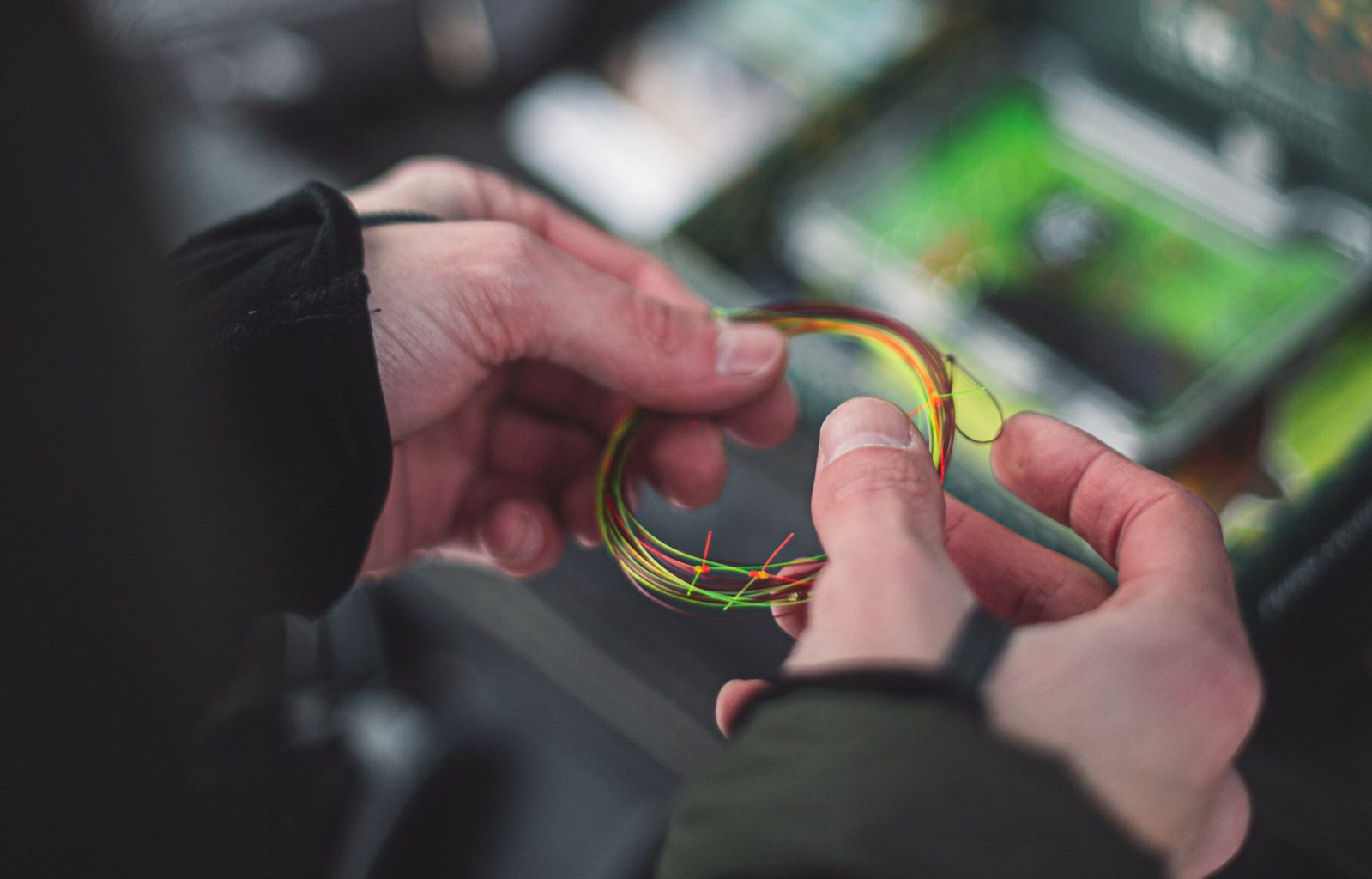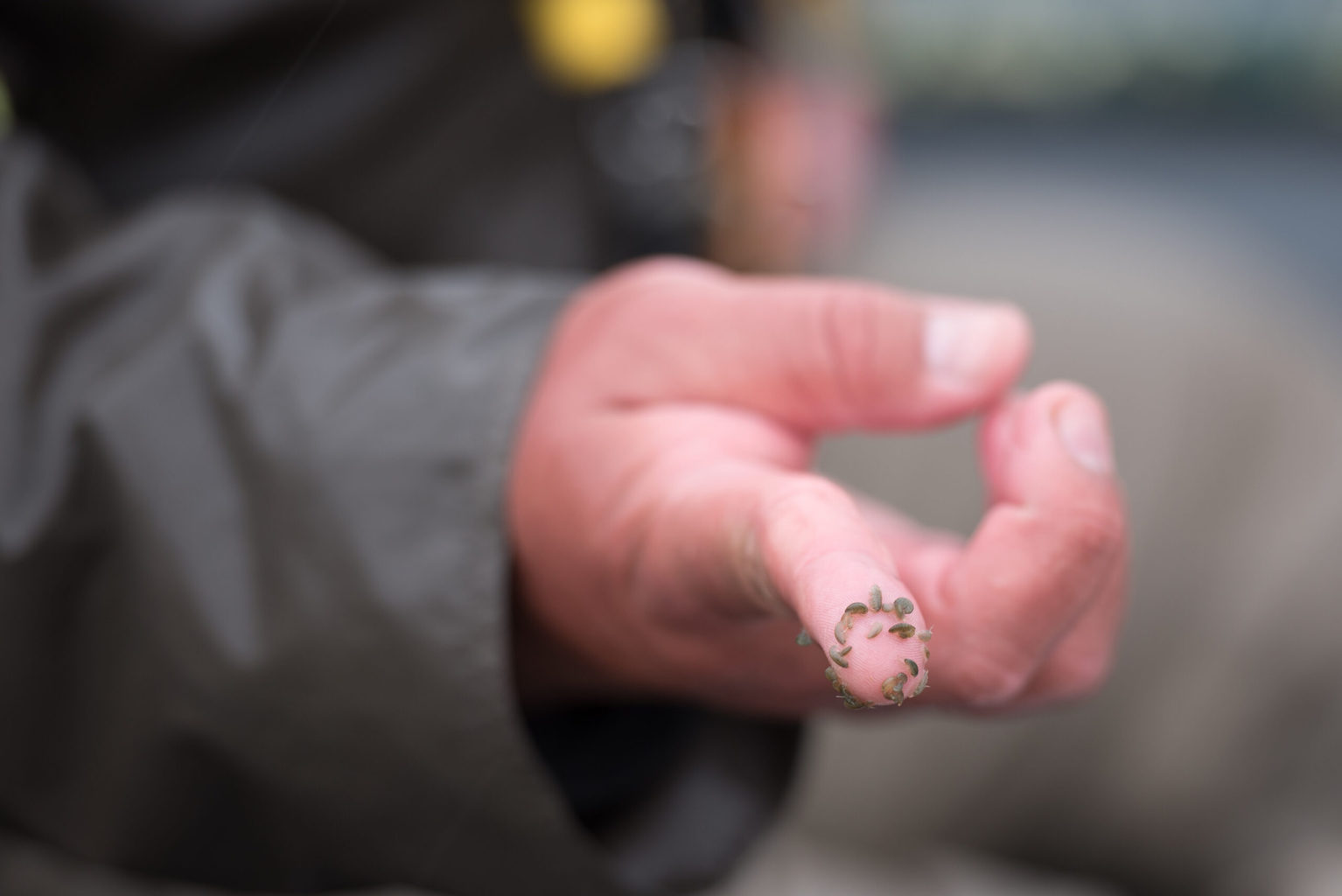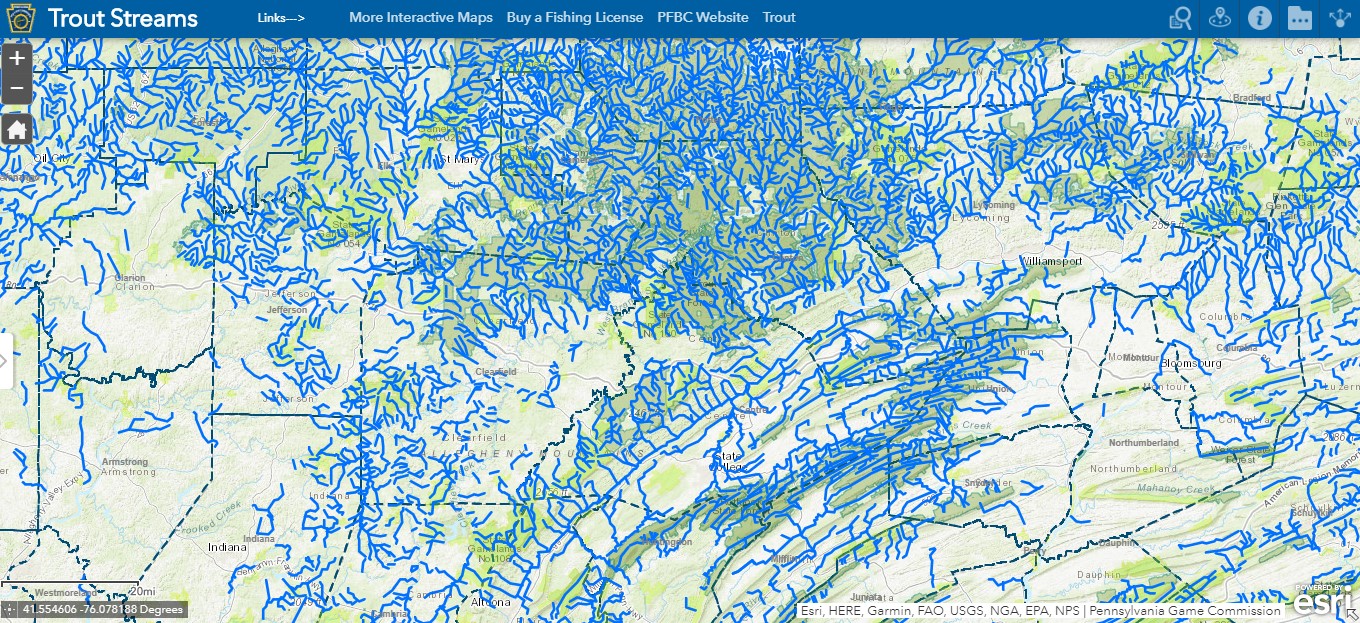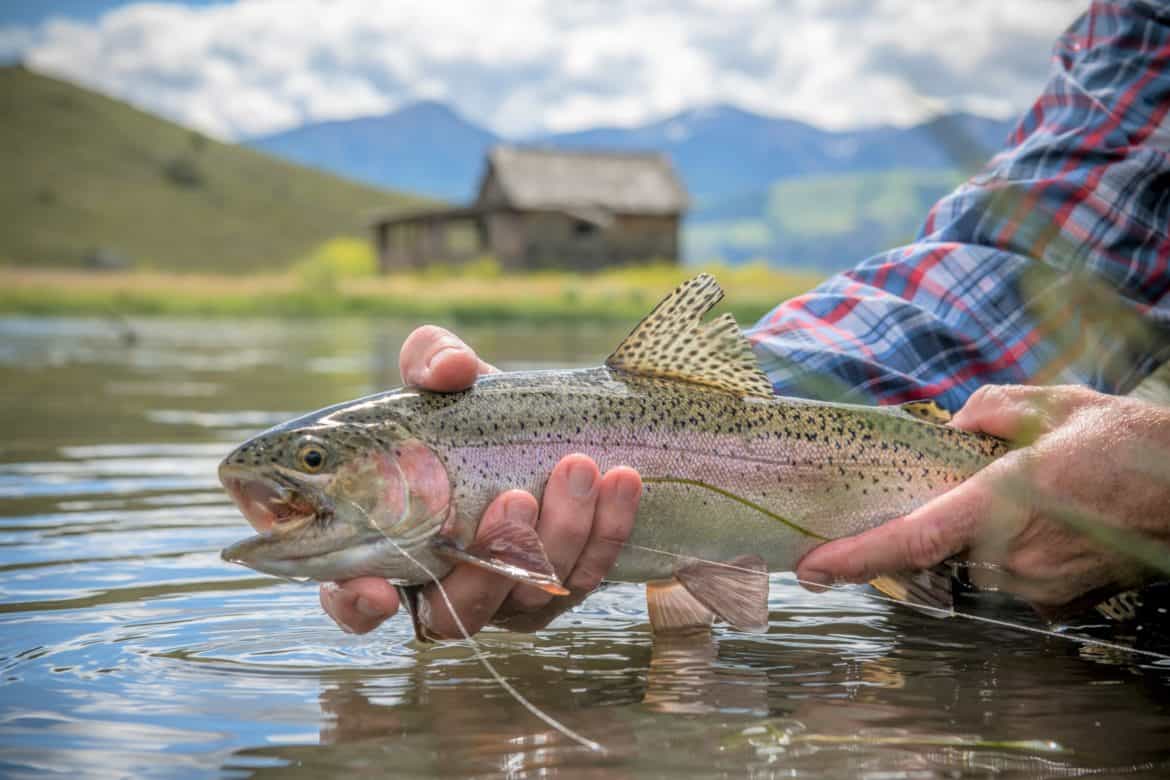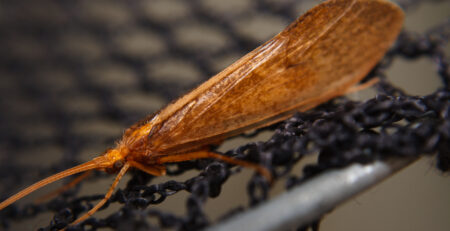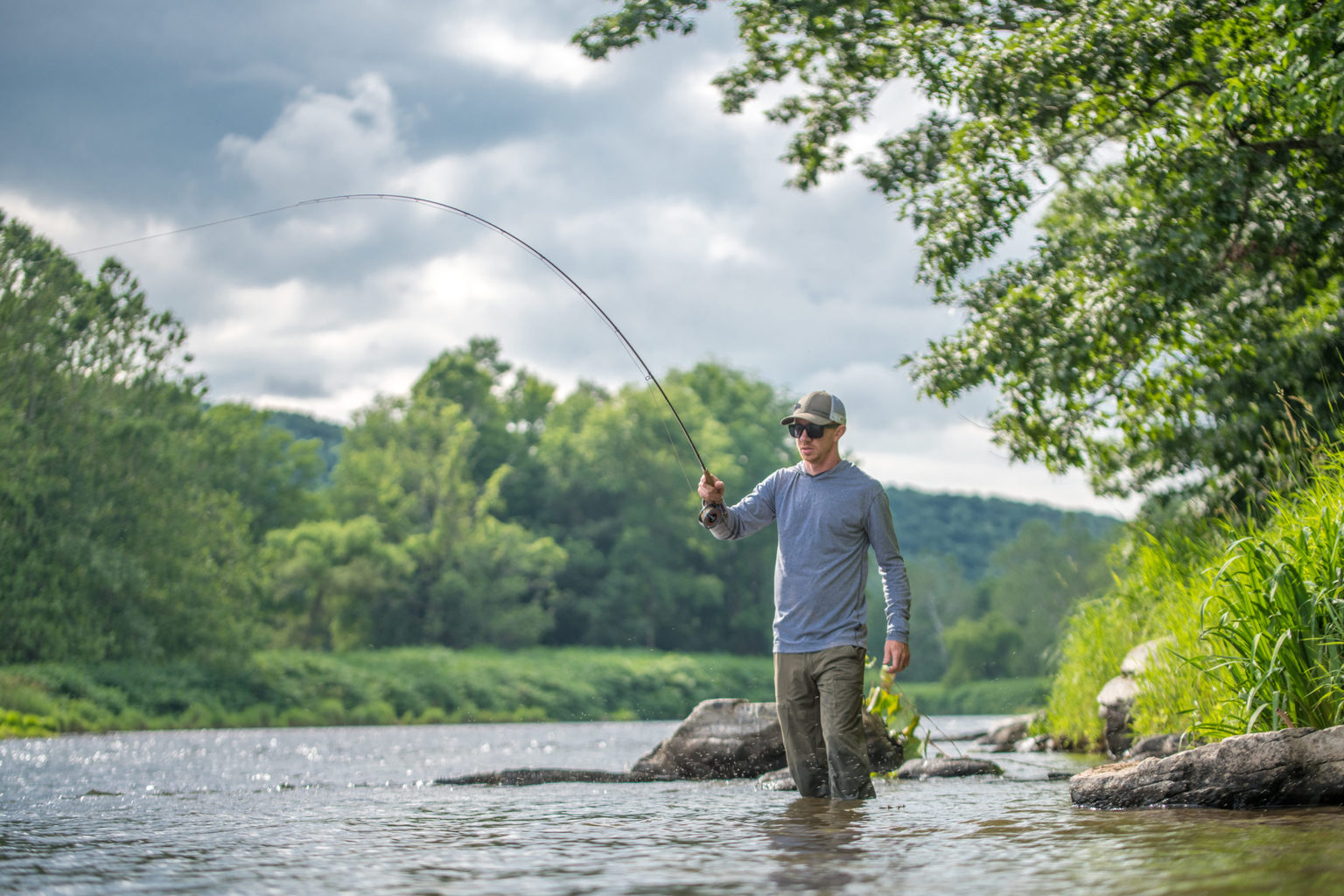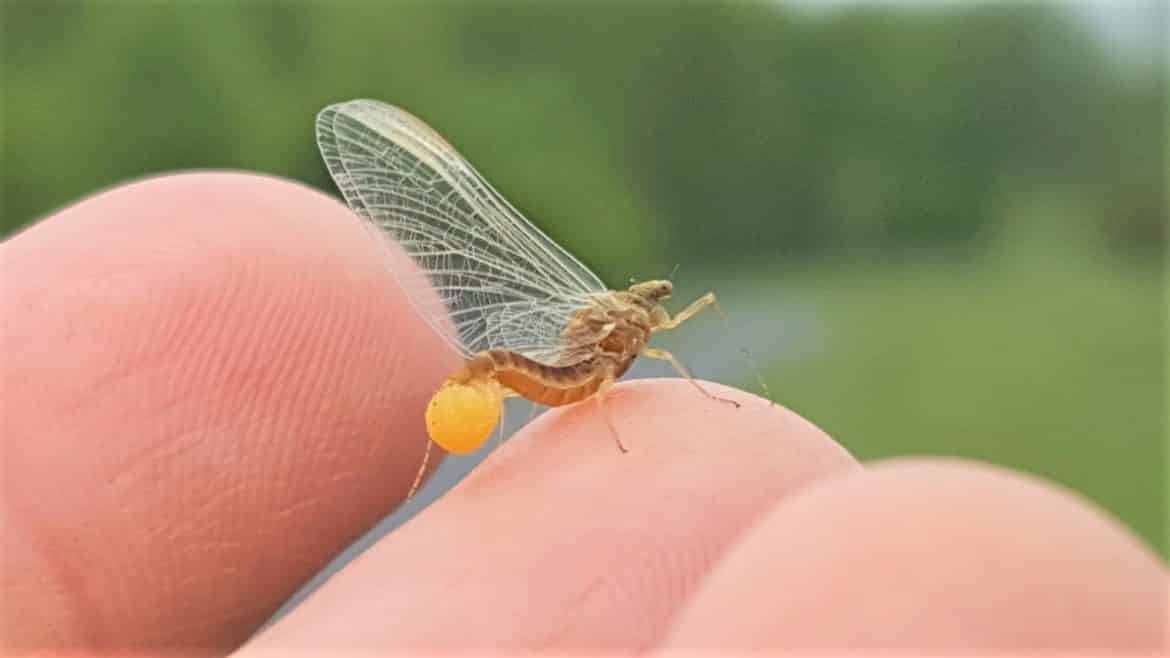Everything You Need To Know On Green Drake Mayflies
Mayflies are some of the most recognizable aquatic insects. Their characteristic upright wings, extended body, and long tails make them easy to see. They are aquatic insects that even novice fly fishermen can recognize.
Mayflies come in all shapes and sizes, have different life cycles, and occupy different areas of the river depending on the species. One of the larger mayfly species that is famous on both Western and Eastern trout rivers are green drakes. For many anglers, fishing a green drake hatch is the highlight of their angling season. Mayfly hatches of this scale often bring the biggest trout in the river up to the surface to eat dry flies. Trout key into the green drake hatch to take advantage of this exceptional opportunity to eat a high calorie meal. Understanding green drake hatches is critical for anglers in order to take advantage of this special spring and summer fly fishing phenomenon.
Table of contents
Western Green Drake Life Cycle
Green drake mayflies go through an incomplete metamorphosis: egg, nymph, and adult. The adult stage has two phases: the dun stage and the spinner stage. The nymph and adult stages should be focused on by fly fishermen.
Green Drake Nymph
The nymph stage is where green drakes spend most of their lifetime. As they grow, they will molt multiple times. The nymphs are excellent swimmers. Western green drake nymphs are crawling mayflies and they are found in fast and medium speed water. They cling to undersides of large boulders and rocky substrate. Drunella Grandis nymphs can range in color from olive all the way to black. They are known to migrate to slower water when the nymph emerges. Because they are crawlers and excellent swimmers, they do not experience accidental drift on the same level that Pale Morning Duns (P.M.D.’s) and other smaller mayfly nymphs experience.
Green Drake Emergers
Prior to swimming to the river’s surface to emerge, green drake nymphs will swim up and down in the water column multiple times in preparation to hatch. As green drake nymphs emerge in the meniscus, they will bust out of their exoskeleton and onto the surface of the river.
Green Drake Cripples
While a majority of green drakes make the transition from nymphs to duns, many emerging green drakes have a difficult time either making it all the way out of the exoskeleton. They become stuck in the meniscus of the river. The meniscus is an almost impenetrable barrier that is difficult for aquatic insects to make it through. It is created by the tension of the water’s surface. Insects that fail to make it through this barrier or do not make it to the adult stage of the hatch are known as cripples.
Green Drake Adult Phases
Once on to the surface of the river, green drakes become duns. Duns are sexually immature mayflies that lack mouth parts to eat. Their main goal is to dry their wings and get off the surface of the water as quickly as possible so that they can molt into a sexually mature mayfly and find a mate.
Green drake mayflies undergo a molting process. This is the second phase of the adult stage. Green Drake spinners are in the sexually mature phase of the adult stage. Once their wings are dry, green drakes fly to streamside bushes and mate. Eventually, they will return to the river, lay their eggs, and die. They will fall flat on the water’s surface with their wings splayed out. This is what is known as a spinner fall.
Anglers should note that green drake spinners are often brown or rust colored. This a large departure from the green and almost fluorescent green markings that can be found on a green drake dun.

Important Angling Knowledge About Green Drakes
Green Drake Characteristics
While green drakes aren’t the largest mayflies, they are still considered large insects in comparison to other aquatic insects in the river. Usually found in hook sizes 8, 10, and 12 (14-16mm). Green drakes are green in color as their name implies. Their distribution is far and wide throughout the United States and while green drakes are green, they can vary in color depending on the river system.
Unlike most mayflies, green drakes have a strong muscular build. In addition to their linebacker-like profile, they have disproportionality long grey wings and three tails. A Green drake hatch can happen anytime from late spring all the way to August. Late June and July are the prime times to experience a green drake hatch on many rivers in the United States.
Environmental Factors
Green drakes are ecologically delicate. They require streams and rivers with high water quality. A water temperature of 58 degrees is required for a green drake hatch to materialize. That being said, the green drake, grey drake, and brown drake hatches are all very difficult to predict. Often times it is impossible, and anglers will hear all too familiar phrases, “You should have been here last week!”
Factors such as cloud cover, water temperature, and elevation all affect when a green drake hatch will occur. It is important to remember that on bright sunny days, green drake hatches are going to happen in the late evening or dusk. This can change with cloud cover, cooler weather, and precipitation. These factors accelerate the hatch timing and bugs will start appearing mid-day. Cloud cover and cooler temperatures will often create longer and more intense hatches with duns appearing around noon.
Green Drake Behavior Important to Fly Fishing
Green Drakes are important to both big trout and anglers for several reasons. The green drake life cycle offers many opportunities of vulnerability. These are moments that most trout won’t pass up. They are easy meals that require less effort. While most green drakes break out of their nymphal shuck effortlessly, many fail to do so, helplessly stuck in the transition between emerger and dun. This is the most pronounced moment of vulnerability that trout are able to take advantage of.
Mayflies that fail to make it the dun stage are referred to as cripples. Cripples are low hanging fruit in the food chain. Trout feed on them vociferously. Much like apex land predators singling out the weakest link from a herd, trout will sometimes ignore healthy insects and key in on cripples. Green drake cripple patterns are critical to have in your fly box, so that you can take advantage of the green drakes misfortune.
Green drake mayflies have rather large wings that require an unusually long time to dry before they can take flight from the surface of the river. This means they spend long periods of time on the water, offering trout ample opportunity at an easy meal. This is phase of the hatch offers trout the second period of vulnerability. While they are trying to dry their wings, they tumble and awkwardly fumble around on water’s surface. This movement and concentration of large calorie meals will bring even the most weary brown trout to the surface to feed.
Western Green Drakes vs Eastern Green Drakes
So far we have spent most of our time discussing Western green drake hatches (Drunella doddsi and Drunella grandis). We wouldn’t want our Eastern anglers to feel left out. The Eastern green drake hatch is one of the most anticipated events of East Coast fly fishing. This is also one of the largest insects that Eastern anglers will see during their fly fishing season.
There are some differences that need to be noted when fly fishing Eastern green drake hatches. Eastern green drakes are a completely different species than their Western counterparts. Western Green Drakes are a darker shade of olive and slightly smaller. Eastern Green Drakes are larger and similar to Hexagenia mayflies in the Midwest, Eastern Green Drake Nymphs are also burrowers. They occupy the silty bottom substrate of Eastern streams.

Eastern Green Drake Hatch Timing
Hatches in the East typically happen a little earlier in the season. Spring days in May can bring Eastern green drake hatches. On streams in Western Pennsylvania, this hatch starts mid to late May. Hatches move northward and appear on streams in the Catskills in early June and the Adirondacks in late June.
While emergers and cripples are extremely important in Western drake hatches, Eastern Drakes emerge very quickly. This make the emerging portion of the hatch less important. Anglers should focus most of their attention on the adult phases of the hatch. The dun and Spinner stages are most important.
Much like the Western Green Drakes, these large mayflies with disproportionately large wings and thick bodies, require a long period of time to dry their wings. Eastern green drakes will spend more time on the water than other aquatic insects that might also be hatching. In addition, they also clumsily move across the surface of the river during this vulnerable stage of the hatch. This gives both fish and anglers ample opportunity to target the dun portion of an Eastern green drake hatch. This can provide some of the best dry fly fishing of the year.
The Spinner Fall
The Eastern green drake spinner fall is an important part of an Eastern green drake hatch. As the duns mature, they will take flight and move to stream side foliage to mater. They will stay there for up to three days. When spinners are ready to lay their eggs, they will form clouds of mayflies and return to the surface of the stream to lay their eggs. Once egg laying is complete, the spinners will fall dead on the river’s surface.
Their wings splayed out, they lie flush on the surface of the water. In addition, they change color from green or olive to black or white. These large spinner falls are opportunities for fish to eat an easy meal without expending much energy. Spinner falls usually happen at dusk and can continue into the night. Weather is a major factor in when they occur, and they can happen earlier in the day with changes in environmental factors: cloud cover, rain, temperature and wind all will affect a spinner fall.
Where Do Green Drakes Hatch
Western Green Drakes
Green drake mayflies are found throughout both the Western United States and the Eastern United States. Some of the famous rivers in the Western United States where green drake hatches are prolific are the Henry’s Fork River, the Roaring Fork River in Colorado, the Metolius River in Oregon, the Big Hole River in Montana, Wyoming, and Idaho’s Snake River, and many more.
Eastern Green Drakes
East Coast anglers have plenty of fly fishing opportunities to fish green drake hatches. In Pennsylvania, hatches are found throughout the Keystone state.
In Western Pennsylvania, the Alleghany drainage has multiple rivers that provide Eastern green drake hatches. Penn’s Creek in central Pennsylvania has an epic green drake hatch. Upper parts of the Delaware and Lehigh River have sparse hatches. Maine provides anglers with abundant opportunities to target hatches on the Aroostook, Allagash, and Penobscot River watersheds. Watersheds in the Catskills and Adirondacks provide ample chances to fish an Eastern green drake hatch.
How Do Trout Rise To Green Drake Mayflies
Mouths and Heads
Identifying the proper rise form is critical when deciding what fly you choose for a green drake hatch. Many times when a trout eats a green drake dun on the surface, it is aggressive. Usually, a loud splash when they are eating these large mayflies on the water’s surface is a common sight. This is especially true if the green drake duns are active and moving. If the hatch is well developed and there are many duns idly floating on the stream’s surface, trout will get into a feeding rhythm, mowing down line after line of green drake duns. This obvious behavior, because you will see the entire fishes mouth and head out of the water. It looks very similar to Jaws eating small sail boats. In either of these cases, this is your opportunity to fish a high riding dry fly.
Shoulder and Fins
If you find yourself in a scenario where there are duns on the river with lots of trout rising around you, but they won’t take your dry fly, then pay close attention to the rise forms. If you are seeing trout backs: fishes shoulders, dorsal fins, and the tops of tails, then chances are the fish are eating emergers and cripples in the river’s surface film. Fish flies that sit flush with water or hang in the surface film. Patterns that hang in the film of the water simulate a struggling drake, mercilessly halfway in and halfway out of the water fighting for a chance at life. These patterns are ideal when trout refuse or ignore dry flies.
Choosing The Right Gear For A Green Drake Hatch
Having the right setup for a green drake hatch is important. You do not want to be caught on the water during an epic green drake fly fishing opportunity without any green drake patterns or the appropriate leaders. These are large insects, so tippet and leader choice should reflect that.
Leader Selection
Fishing 4x and 3x leaders in the 9-foot variety will give you ample energy to turn large dry fly patterns over accurately. Adding fluorocarbon tippet to your leader when fishing dry flies can give you an advantage when fishing to ‘leader’ shy fish. Contrary to conventional dry fly fishing wisdom, sinking fluorocarbon tippet gives you an advantage because it doesn’t create dimples on the water as monofilament does. This is a stealthier approach. In addition, heavier tippet material will allow you to turn flies over on your cast if you want to add a green drake nymph as a dropper. A dropper rig can be effective during pre-hatch hours.
Fly Selection
A variety of flies based on various stages of the hatch is key to being successful on the water. For Western fishermen, you will need flies that represent the nymph, emerger, dun, and spinner portions of the hatch. Eastern fishermen can focus on the same phases of the hatch but can forget about the emerging portion of the life cycle.

Dry Fly Presentation
Dry flies with a large post or wing, that ride high on the water can be effective when large numbers of duns are riding on the surface of the stream. Presentation is less important than with smaller mayflies. When trout look up at natural floating on the surface of the river, the large silhouette of a drake wing and muscular drake body increases the sight window that is afforded to the fish.
Trout can see both the fly and natural insects much easier than smaller mayflies and caddis flies. Fish will move left and right to take a poorly presented fly more aggressively than they will with smaller mayflies. Your window of opportunity is much larger, and therefore the presentation of the fly can be less precise.
Remember, drakes often move around awkwardly on the water during the dun phase of the hatch. This affords fly fishermen the ability to drag or slightly twitch flies that would normally be fished in a dead drift manner. Twitching the fly with your rod tip needs to be done selectively. Too much movement will put fish down.
Green Drake Patterns
Nymph Patterns
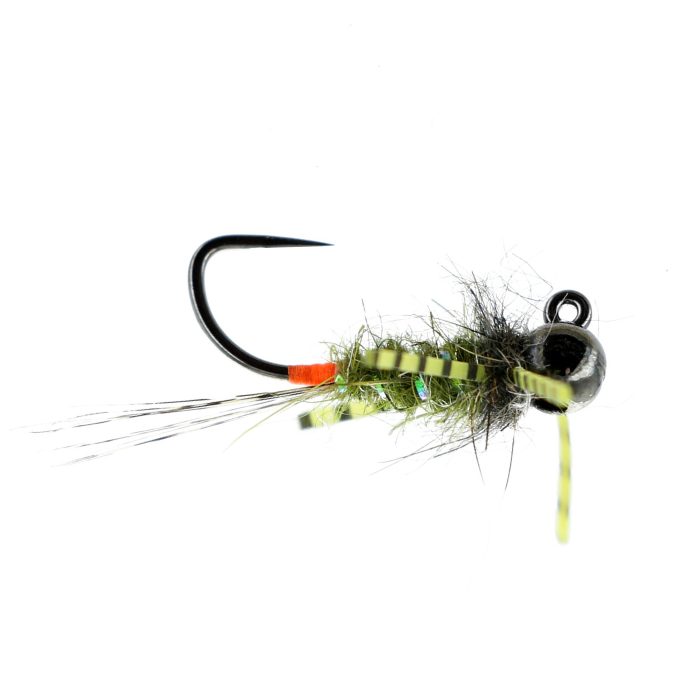
Green Drake Hipster
This is one of the most effective nymph patterns out there. It is an excellent choice for anglers who are trying to match a hatch and cover other potential insects that might be in the water column. Choose sizes #10 – #12.

Jiggy Tungsten CDC Flashback Pheasant Tail Nymph
Nothing beats a pheasant tail when fishing in a variety of waters. North, South, East, or West, pheasant tails work. The Jiggy Tungsten CDC Flashback Pheasant Tail Nymph takes it to the next level. A heavy tungsten bead and the jig hook get this fly down deep into the strike zone. In addition, a CDC collar gives the fly and incredible amount of natural movement. This fly is tailor-made for nymphing deep or using it in a dry dropper rig.
Emerger Patterns

Green Drake Foam Para Emerger
This emerger pattern has a large foam post that makes the fly more visible in the water for the angler. In addition, it hangs perfectly in the meniscus. Halfway in the water and halfway out, this fly offers selective trout the perfect opportunity to eat a fly that represents the emerging phase of a green drake hatch.
CDC Biot Green Drake Emerger
The CDC biot green drake emerger is a deadly fly when fishing for selective trout that are taking naturals in the surface film. Unlike most emerger patterns that hang in the surface film, this fly lays in a more flat on the water with just the rear of the fly in the meniscus. The CDC wing gives the fly an extra amount of realistic movement and floats well.
Cripple Patterns

The Last Chance Cripple
The Last Chance Cripple is a stellar fly that will fool wary trout. This is an excellent fly to have in your box when trout refuse a dry fly or emerger pattern.
Dry Fly Patterns

Adams
An Adams in sizes #10 and 12# will usually do the trick when fishing a green drake hatch. The thorax style dry fly rides high on the water. This is very similar to natural green drake duns.

Green Drake Para-Drake
An almost unsinkable pattern, the para-drake is an excellent fly that requires less maintenance than other conventional dry flies. This means you can spend more time fishing and less time applying floatant. In addition, the life-like profile is a fish catching machine.
Fly Fishing Made Easy 👍
Our Quarterly Fly Club ships 1,000’s of flies to anglers all across the United States. Receive curated fly assortments selected for the season with in-depth articles on how to fish them. Great for beginners to learn and for intermediates to discover new flies.



